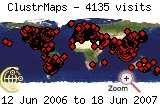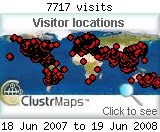All timings exclude waiting time for bus, train & at pedestrian zebra crossings, traffic congestion, etc
Walking time based on catwalk speed of 80m/min = 4.8km/h assuming flat terrain & no overhead bridges to climb
Fares include transfer rebates
From nearest bus stop (192m, 2min walk):
- SBS32 - 1km walk
($1.39 / 1h 24min / 47 stops / plenty of cockroaches, waiting time for bus 20+min on bad days, sometimes drunkards at night, kena molested once) - SBS32 - 592m walk
($1.39 / 1h 14min / 44 stops / as #1 above, & need to cross Malaysian railway tracks, slope too muddy in rain, need torchlight & good hearing at night else langgar train) - SBS14 - 1.2km walk
($1.48 / 1h 19min / 38 stops / nice walking route, waiting time for bus 20+min on bad days, wettest route in rain, walking route secluded & not well-lit at night) - SBS14 - 2.24km walk
($1.48 / 1h 26min / 35 stops / as #3 above) - SBS14 - TIBS106 - 870m walk
($2.03 / SMRT website does not calculate bus journey time / 34 stops / psychologically the fastest route, driest option in rain, no TV mobile noise on TIBS106, waiting time for SBS14 20+min on bad days, need 2 layers of fleece for TIBS106)
From second nearest bus stop (540m, 7min jaywalk):
- SBS48 - 1km walk
($1.39 / 1h 15min / 27 stops / waiting time for bus 17+min on most days, 25++++min on bad days & late at night, sometimes rains INSIDE bus, sometimes drunkards at night, driver kena madman once)
From third nearest bus stop (566m, 8min walk/385m, 5min jaywalk):
- SBS55/TIBS966 - 167m walk - MRT (14 stops) - 855m walk
($1.81 / 58-61min / 18 stops / no TV mobile noise on TIBS966 & train, Jalan Eunos regular traffic jam usually makes any time saved negligible)
From fourth nearest bus stop (648m, 8min walk):
- SBS196 - 630m walk
($1.39 / 1h 16min / 40 stops / sometimes too crowded to board in mornings, waiting time 20+min on bad days, kena flasher once, reverse route late at night can be as fast as 55min)
Including waiting times, the cat usually takes 1h 30-40min in total. On bad days, 2h. Add in return journey = ~3h = 1/8 of day spent on commute.
The cat earns ~$15/h, so 3h/day = ~$45 = >$10000/year (after deducting public holidays & annual leave days) = >3.3mth bonus. If only the cat was paid to sit in buses (as a passenger)...
By car: 20min (no jam) = 40-60min return journey (allowing for AYE & ECP jam) = max 1/24 of day spent on commute.
During its undergraduate days at the self-proclaimed world crass university (not that far from its current workplace), the cat sometimes wondered if it was faster to get class by boat between Bedok jetty & West Coast ferry terminal...
Now the cat gets to work by options #3 & 4 from nearest bus stop to longkang, the walks are along a peaceful quiet road with little traffic noise & fumes, loads of greenery with flowers & many large beautiful trees draped with ferns, plenty of kingfishers, bulbuls & sunbirds & sometimes brahminy kites, & black & white colonial bungalows. Beautiful morning exercise =) & it returns to its longkang by the last option (SBS196).
Time on bus is spent on kooning, freezing to death, shutting out TV mobile & handphone noise, reading, planning for next backpacking trip, thinking & reflecting, sudoku, drinking vitasoy, drying (after washing) & combing & tying up cat fur (in the mornings), flicking away cockroaches, changing seats to avoid smokers, & watching the world go by go by go by go by go by go by...
The cat has to leave home before the rest of the household wakes up, & it has to finish dinner before starting on the journey home, so it never eats with family on working days (which can be everyday), but who does anyway? It gets really cold & wet on rainy days especially on the rare occasions when heavy rain coincides with high tide & part of its walking route home floods ankle-deep, but its current job allows it to wear flip-flops to work =)
It does not need to drive, deal directly with Singaporean drivers (except at pedestrian crossings), fight over parking space, pay for car, COE, road tax, vehicle insurance, ERP, petrol, parking, servicing & repairs, etc, wash any car (now that it no longer has to wash the one at home), nor worry about a big fat carbon pawprint =)
Interesting observation:
SBStransit website gives bus journey times of 62min/20.23km (SBS14), 56min/18.37km (SBS14), 69min/19.7km (SBS32), 65min/18.46km (SBS32), 7min/1.75km (SBS55), 55min/17.2km (SBS48), & 67min/19.4km (SBS196) on paved non-mountainous flat city roads...which works out to an average of 17.8km/h.
In rural Laos, the cat took 7h/195km (Huay Xai-Luang Namtha) & 9.5h/230km (Udomxai-Phongsaly) by bus on mostly unpaved winding mountainous highways, with more than 5 breakdowns for Huay Xai-Luang Namtha, stops for lunch & toilet breaks & at several villages to pick up/drop off passengers & cargo & for passengers to alight & walk on upslope sections...which works out to an average of 25.9km/h.
For paved but potholed winding mountainous highways, it took 2h/60km (Luang Namtha-Muang Sing) & 4h/120km (Luang Namtha-Udomxai) by songthaew (truck) or bus with no breakdowns nor lunch stops, but with stops for toilet breaks & at several villages to pick up/drop off passengers & cargo...which works out to an average of 30km/h.
The differences in public transport between a self-proclaimed developed nation & an LLDC (landlocked least-developed country)...






No comments:
Post a Comment